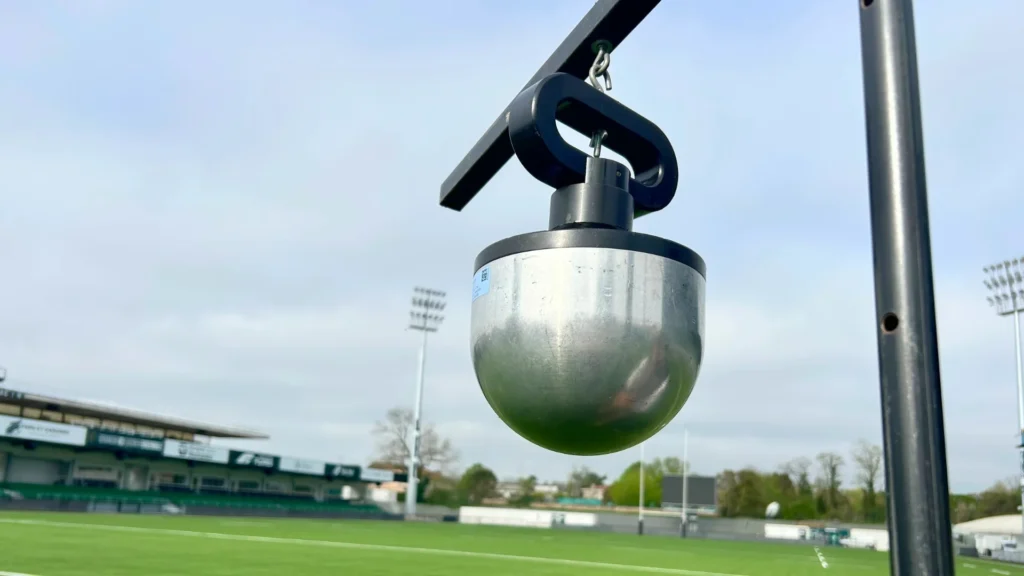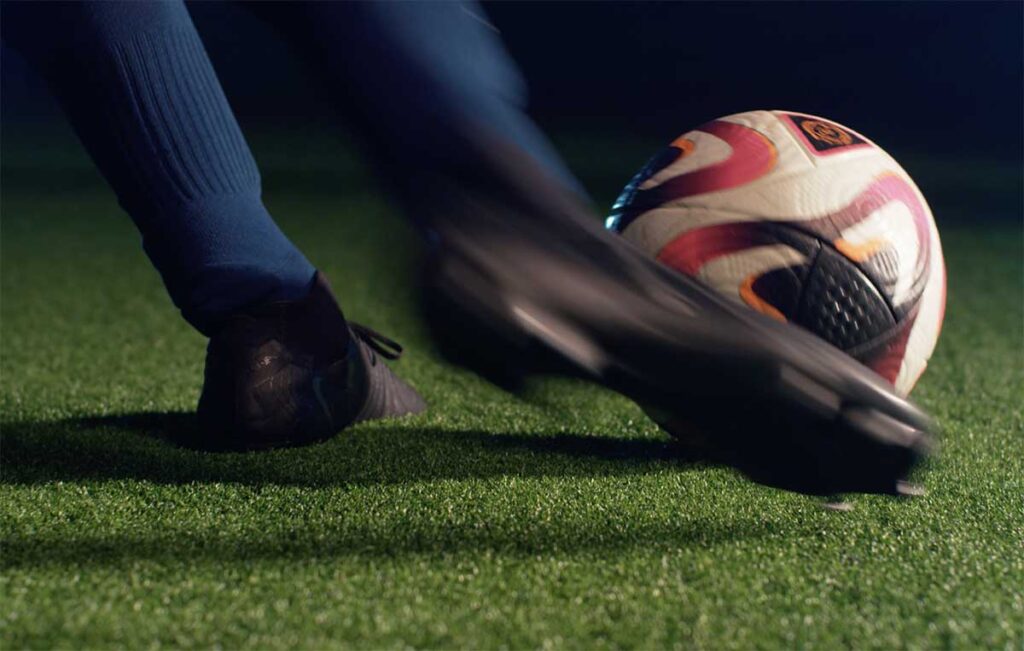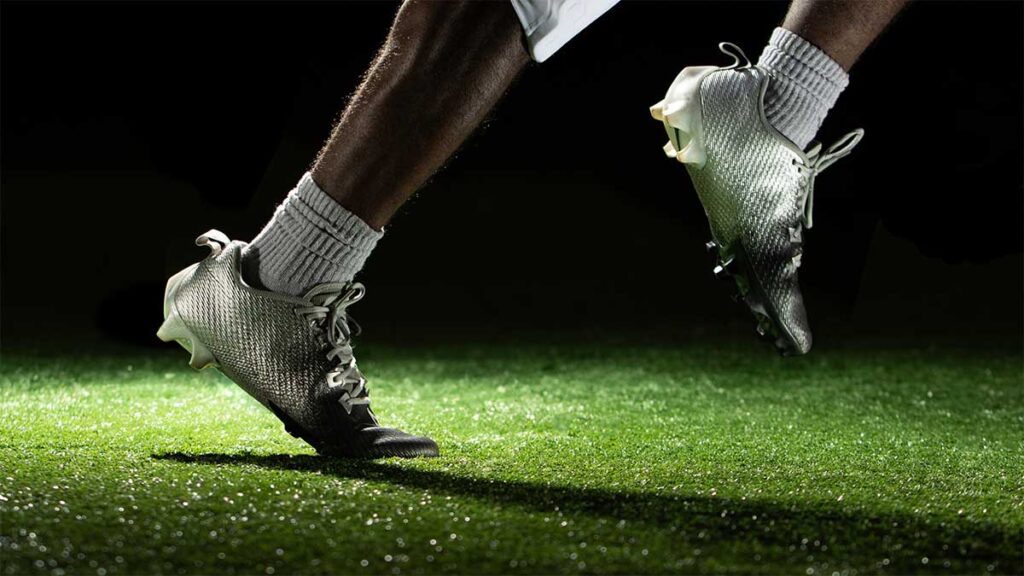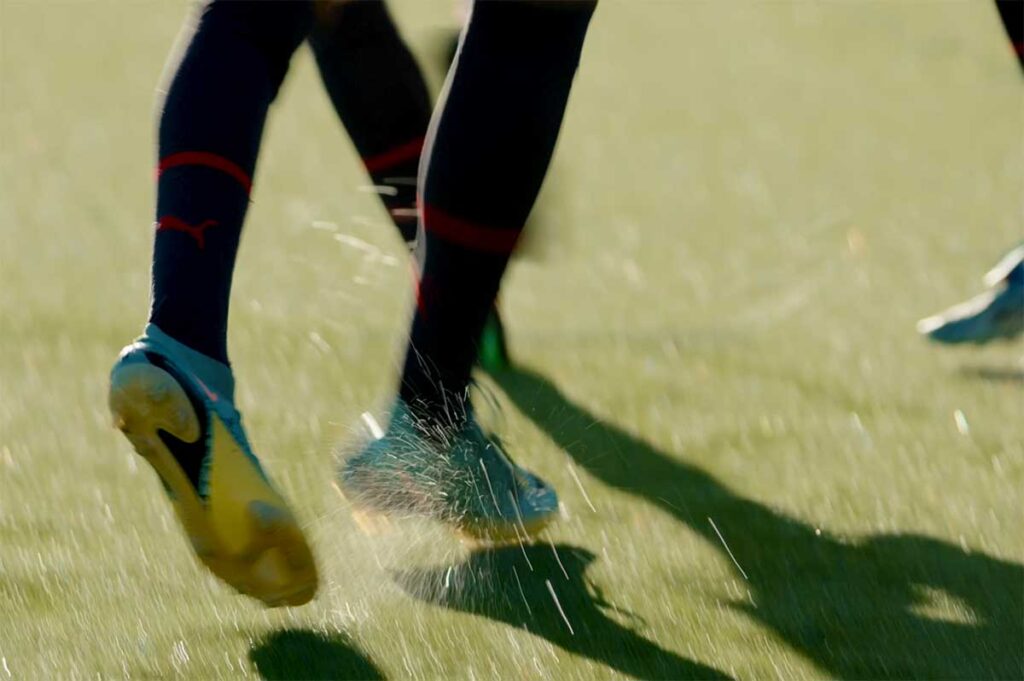Biomechanical Complexity, Surface Design, and the Limitations of Current Testing Standards
Grip between a Football or Soccer player’s footwear and the playing surface is one of the most critical factors in performance, comfort and safety.
Scientifically, grip is defined using metrics such as the coefficient of friction, shear force, translational traction, and torsional resistance. These terms attempt to quantify how well the player can push off, stop, and change direction safely and efficiently. However, translating these technical measurements into real-world safety and performance outcomes is not straightforward and widely used standard test methods do not replicate these very well at all.
In elite and grassroots sport, the ideal grip must strike a delicate balance. Low traction which can lead to loss of footing, delayed acceleration, or impaired cutting ability. In contrast, high traction which can be linked to aggressive cleat designs or high-friction surface design, can “lock” the foot in place during movements, contributing to high torque loads on the knee and ankle risking non-contact injuries.
What constitutes “ideal grip” is not universal. One of the core challenges we face in surface design is the biomechanical diversity of players. Across a single field of play, athletes vary in weight, height, lower-limb alignment, neuromuscular control, speed, and technical style. Some players generate higher ground reaction forces during cutting or sprinting, while others rely more on agility and finesse. What feels stable and fast for a 140 lbs (65 kg) Soccer midfielder may feel overly grippy or restrictive to a >300 lbs (135 kg) Lineman.
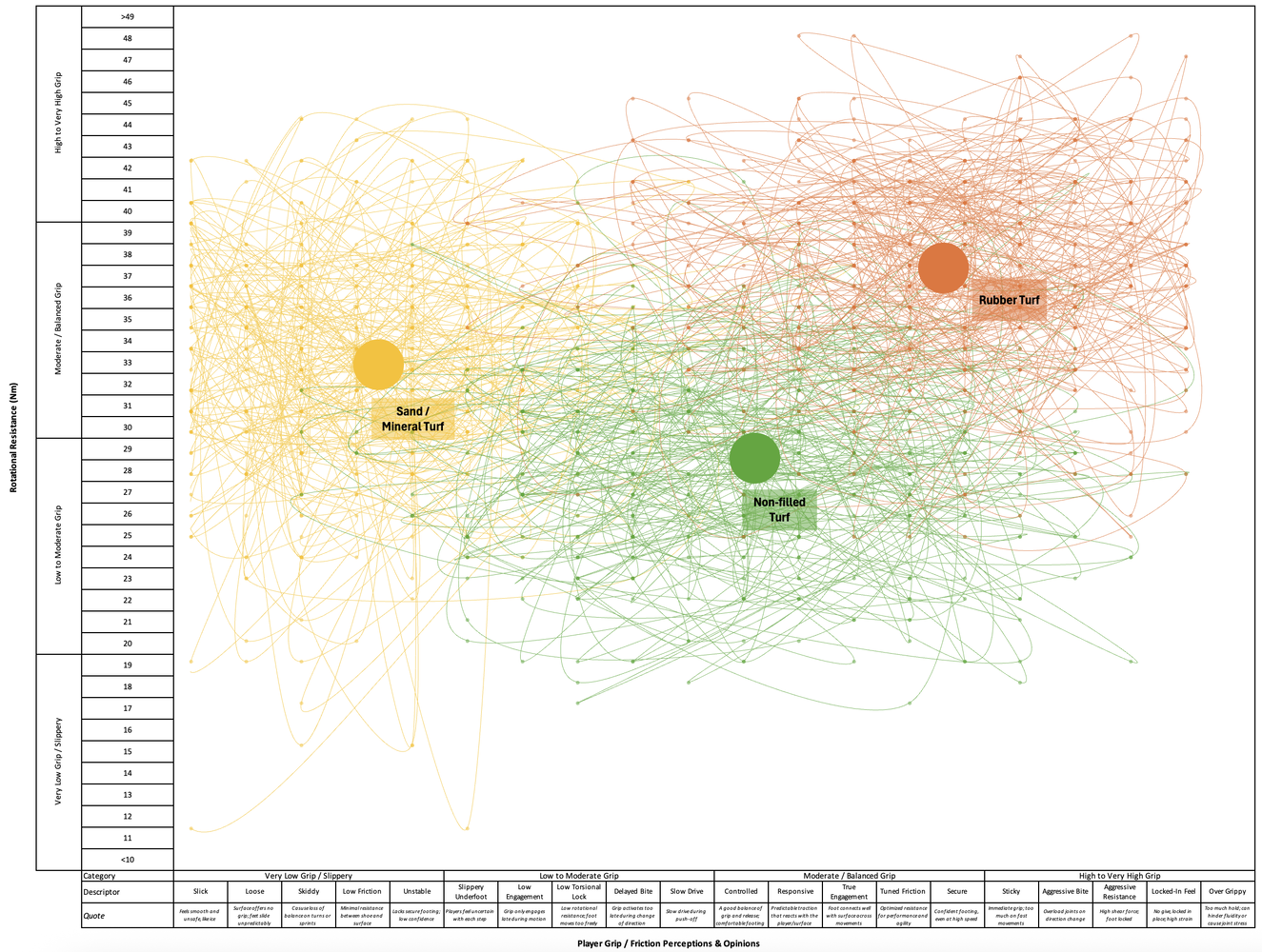
Player Feedback vs Rotational Resistance # 1
This disconnection between the mechanical result and human experience leads to surfaces being certified despite widespread player dissatisfaction or discomfort. Indeed, surfaces that pass rotational thresholds can still produce lower limb torque profiles well above or below those observed during play.
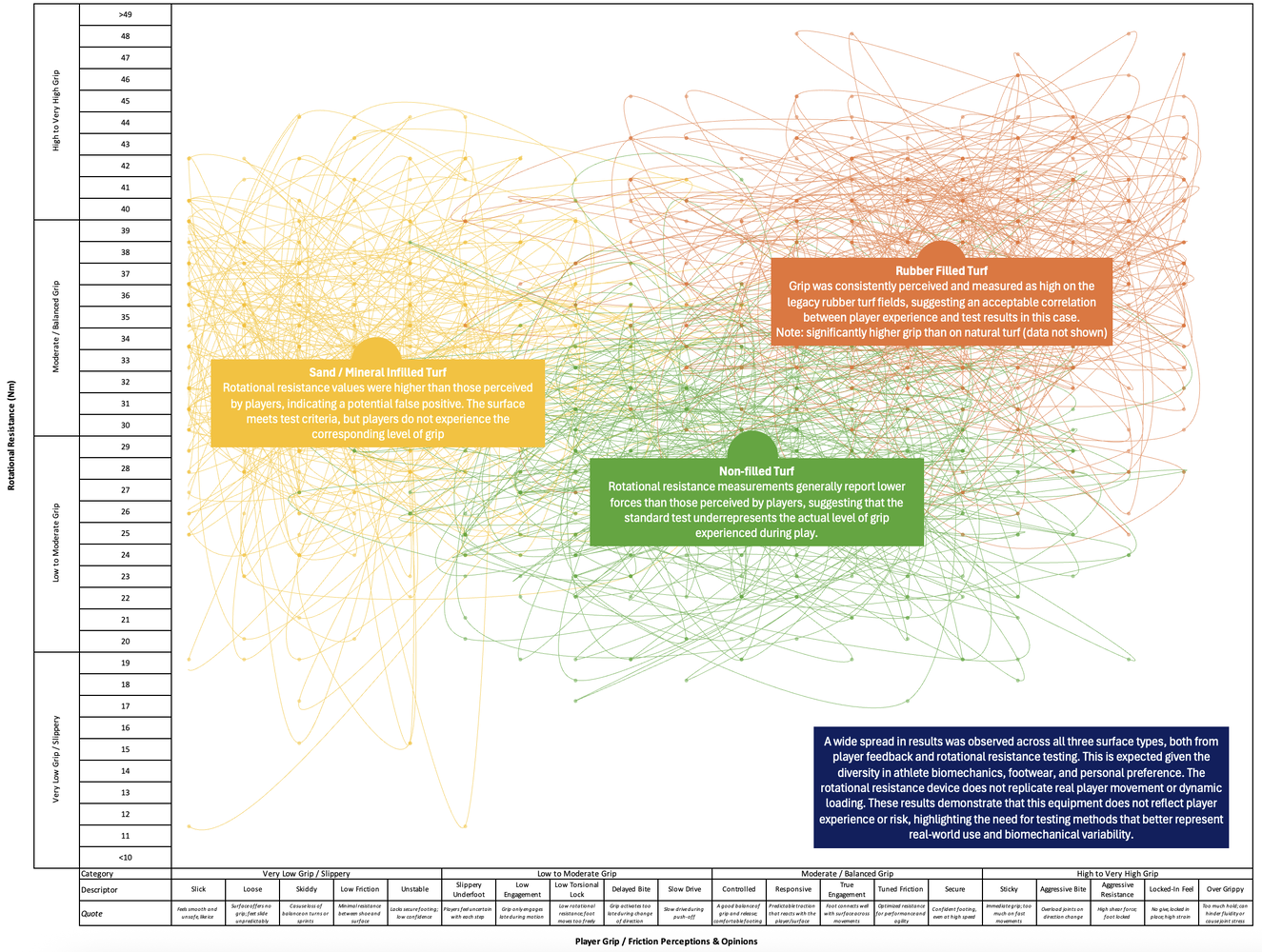
Emerging biomechanical research at stresses the importance of designing surfaces not just for compliance with standards, but for real-world variability. Tools like instrumented footwear, 3D motion capture, and force plates provide this insight. In our lab at CTI and on test fields which provide deeper understanding of how players load and interact with surfaces. These methods capture the interplay between footwear configuration, player strategy, and surface grip, offering a much more accurate understanding of traction and injury risk. Leading to innovative new turf systems such as Pivot Performance Turf and Pure PT.
In conclusion, grip is not a static, one-size-fits-all property, it is a dynamic interplay between surface, footwear, athlete, and environment. Designing for safe and effective grip requires acknowledging the biomechanical diversity of players and the complex forces involved in play. Relying solely on simplified mechanical tests such as the rotational resistance method is inadequate and may mask significant risks to players.
To advance player welfare and performance, the industry must embrace more player-centered, biomechanically relevant approaches to surface evaluation and design.

